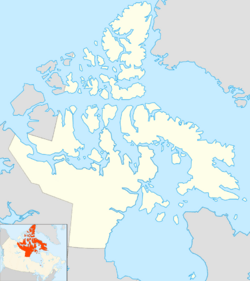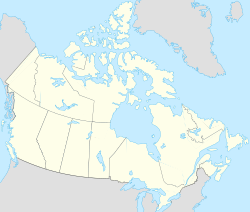Gatter Island facts for kids
| Geography | |
|---|---|
| Location | Lake Hazen |
| Coordinates | 81°55′05″N 69°05′35″W / 81.918°N 69.093°W |
| Archipelago | Canadian Arctic Archipelago |
| Administration | |
|
Canada
|
|
| Nunavut | Nunavut |
| Region | Qikiqtaaluk |
| Demographics | |
| Population | Uninhabited |
Gatter Island is a small, uninhabited island located in the far northern part of Canada. It sits within Lake Hazen, which is a large freshwater lake on Ellesmere Island. This special island is part of the Qikiqtaaluk Region in Nunavut, Canada's largest and northernmost territory.
Contents
Discovering Gatter Island's Location
Gatter Island is unique because it's an "island within an island." This means it's an island located inside a lake, which is itself on a much larger island. It is found within Quttinirpaaq National Park, a huge protected area known for its stunning Arctic landscapes.
Where is Lake Hazen?
Lake Hazen is the largest lake north of the Arctic Circle. It's so big that it has its own islands, like Gatter Island. The lake is fed by glaciers and is a very important part of the Arctic ecosystem.
Ellesmere Island: A Giant Home
Gatter Island is located on Ellesmere Island, which is one of the largest islands in the world. It's part of the Canadian Arctic Archipelago, a group of many islands in the Arctic Ocean. Ellesmere Island is mostly covered in ice caps and glaciers, making it a very cold and remote place.
Nearby Clay Island
Just off the southern shore of Gatter Island, there is an even smaller island called Clay Island. These two islands are close neighbors in the vast waters of Lake Hazen.
Life in Quttinirpaaq National Park
Even though Gatter Island itself is uninhabited, it is part of Quttinirpaaq National Park. This park is a wild and beautiful place, home to various Arctic animals. While the island itself might not have many large animals, the surrounding park is vital for wildlife.
Arctic Wildlife in the Park
Animals like muskoxen, Arctic hare, and Arctic wolf can be found in Quttinirpaaq National Park. Birds also visit the area during the warmer months. The park helps protect these amazing creatures and their harsh but beautiful home.



